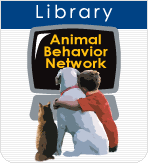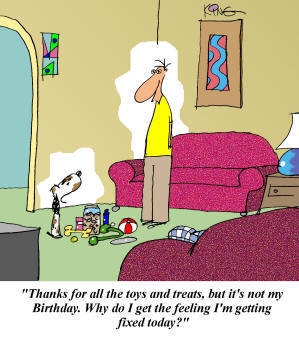|
Getting Started Week 22 - Emotional Leadership
Behaviorist William Campbell not only
coined the "jolly routine" but also the term, "the interpretive factor."
Both terms describe you, as your canine's noble leader, providing
emotional leadership by example.
How? You set the tone
for how you want your puppy to
react to a stimulus. For example, you are at the veterinary practice and
you take out a bag of your canine's favorite toys and goodies in the
lobby. You proceed to act "jolly" and "interpret" the location as a fun
place where your dog can earn treats or toys by sitting and doing other
behaviors on cue.
Canines read human emotions and body
language. So, instead of following your dog's lead when you notice
nervousness, you lead by showing your puppy that there is nothing to be
nervous about. You help your puppy learn by modeling the appropriate
responses with your body language.
For
example, you want your puppy to be friendly around children, so you act
friendly. When dogs are relaxed, their muscle tone is relaxed so you
relax your muscle tone, even wiggle as your approach the children with a jolly greeting.
If
your puppy barks at the door or front window, you look out and say,
"What is it?" If it's the neighbor's cat or someone walking down
the street or a child riding bike or skateboard or the mail carrier
(etc.), then you say, "No worries," and act relaxed as you instruct
your canine to do something else such as "Sit" or, be "Quiet."
Praise
your dog for following your emotional and behavioral cues. If you
have established yourself as a reliable, worthy leader, your puppy will
learn quickly to follow your emotional leadership.
Parenting Tips™ for your puppy
Error Free Puppy Raising™
- Click on the Library Icon below to learn more.

Use Library
Icon
to
go to Library
|
 |
|